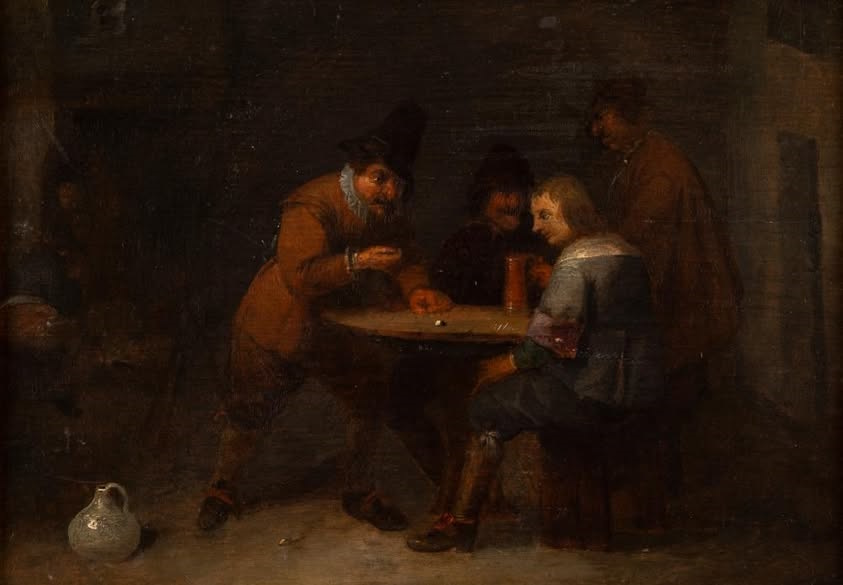
Photo: a fireside chat in the style of Adriaen Brouwer (1603-1638).
Gawęda (“gavenda”) is the quintessential Polish literary form.
The name comes from a word referring to an informal chat – such as one might have with a friend by the fireside.
A gawęda is not a “yarn” because it lacks a unified narrative and its plot – if there is any – meanders, getting lost in tangents, and lacks a definitive conclusion. (A gawęda thus steals all of post-modernism’s thunder).
A gawęda has a topic (such as Tiberius Caesar in Bocheński’s “Tiberius Ceasar” or “The meaning of tradition” in Krawczuk’s “Seven Against Thebes”), but a gawęda is not an essay because it studiously avoids making a thesis; it does not argue a point; it makes no hamfisted generalizations. If you can summarize the main drift of a work in a sentence, that work is not a gawęda.
A gawęda is like a quodlibet (form Latin: “whatever you wish”), a musical composition that combines several different melodies—usually popular tunes—in counterpoint, and often in a light-hearted, humorous manner. Gawęda does just that: it combines different elements: a narrative, an essay, a description, a poem, a historical document, a piece of reportage, a dialogue, an anecdote, a letter, a puzzle, a map. Its unifying principle is not its structure but its theme.
The theme is usually not expressly stated but only alluded to. It can be anything: an event, a person, an experience, a moral stance, a political issue, a phenomenon of nature, a scientific discovery. The various elements of a gawęda appear at first unconnected to each other, but they work together because each sheds a different light on the theme, presenting it, as it were, from a different angle.
A playful mood is often a feature of a gawęda, especially when the underlying theme is dark: counterintuitively, the resulting irony highlights the ominous theme.
A defining characteristic of a gawęda is its reserve, its reluctance to force-feed interpretation. A gawęda strives to create a mood and stimulate reflection, nudging the reader towards certain conclusions, but it never instructs. It’s purpose is to leave the reader musing about the theme, often because he or she is trying to understand how the juxtaposition of the different parts of the gawęda work together.
This gives the gawęda a certain aspect of a charade.
Tiberius Caesar: https://www.amazon.com/dp/B0CD34XGSW
Seven Against Thebes: https://www.amazon.com/dp/B0BDXM4NW5

Hi, this is a comment.
To get started with moderating, editing, and deleting comments, please visit the Comments screen in the dashboard.
Commenter avatars come from Gravatar.